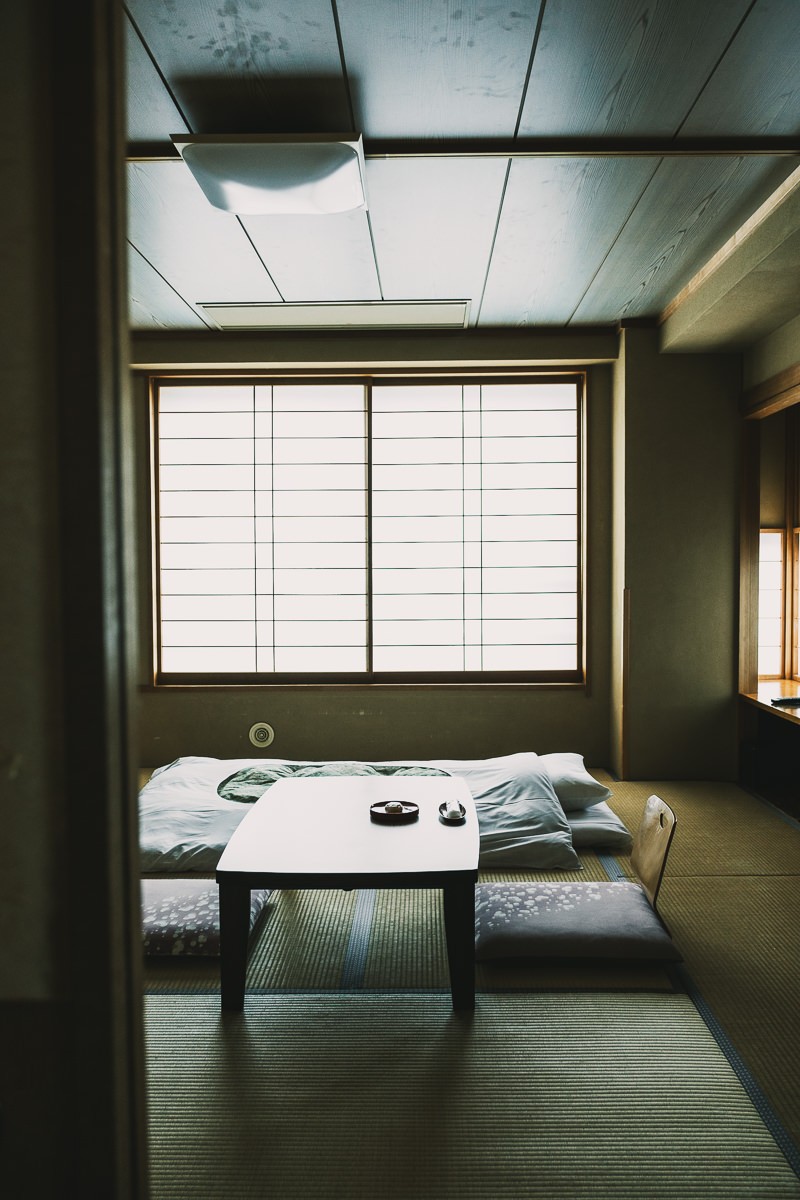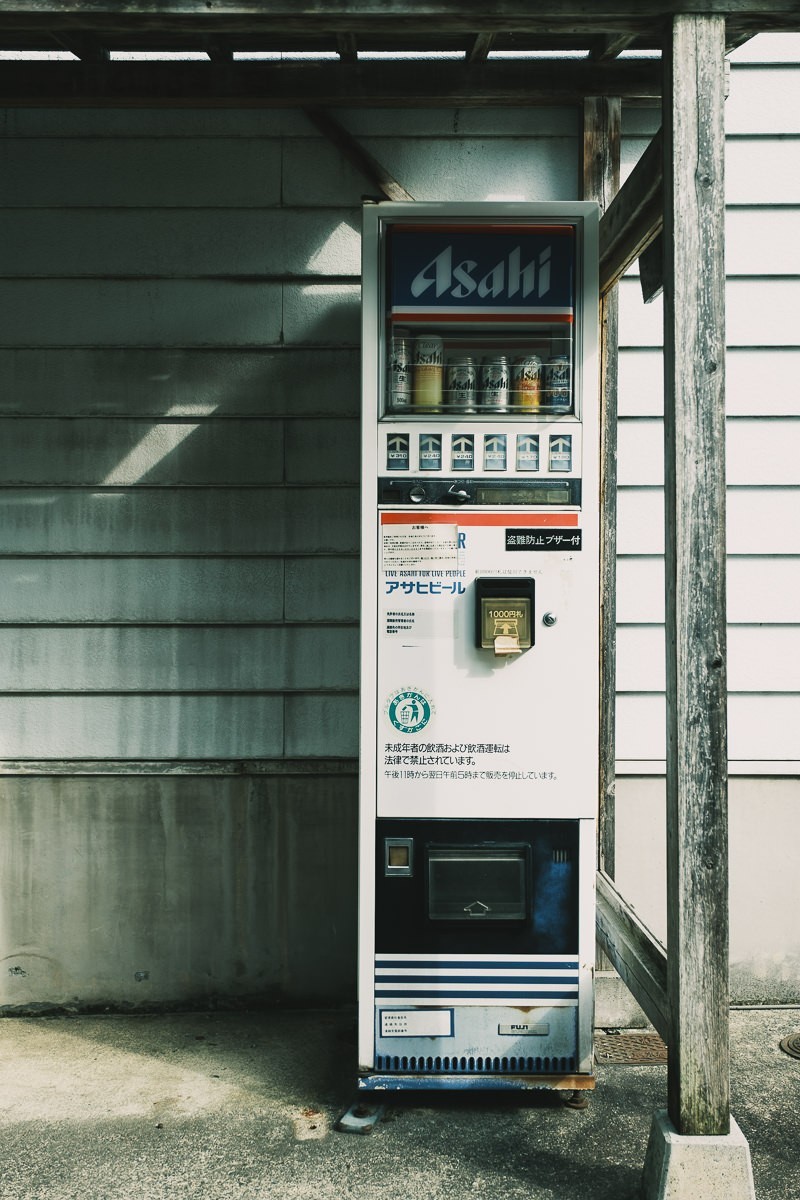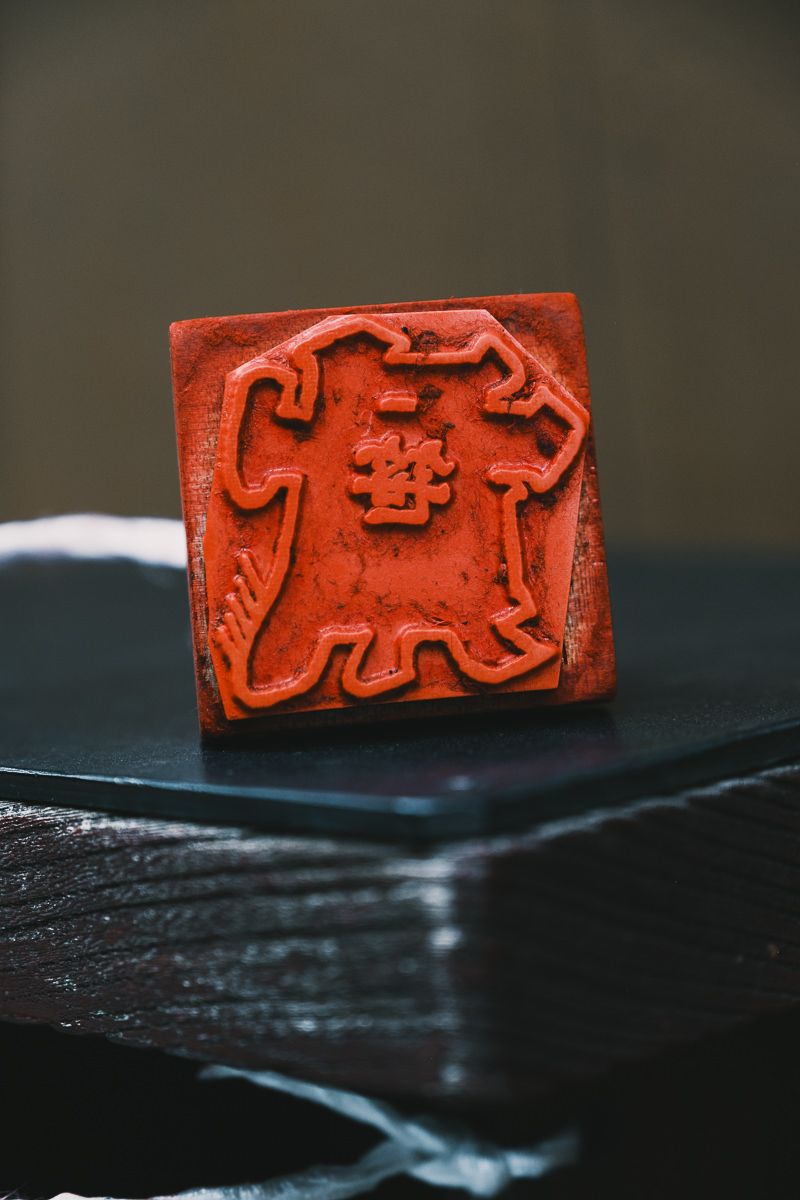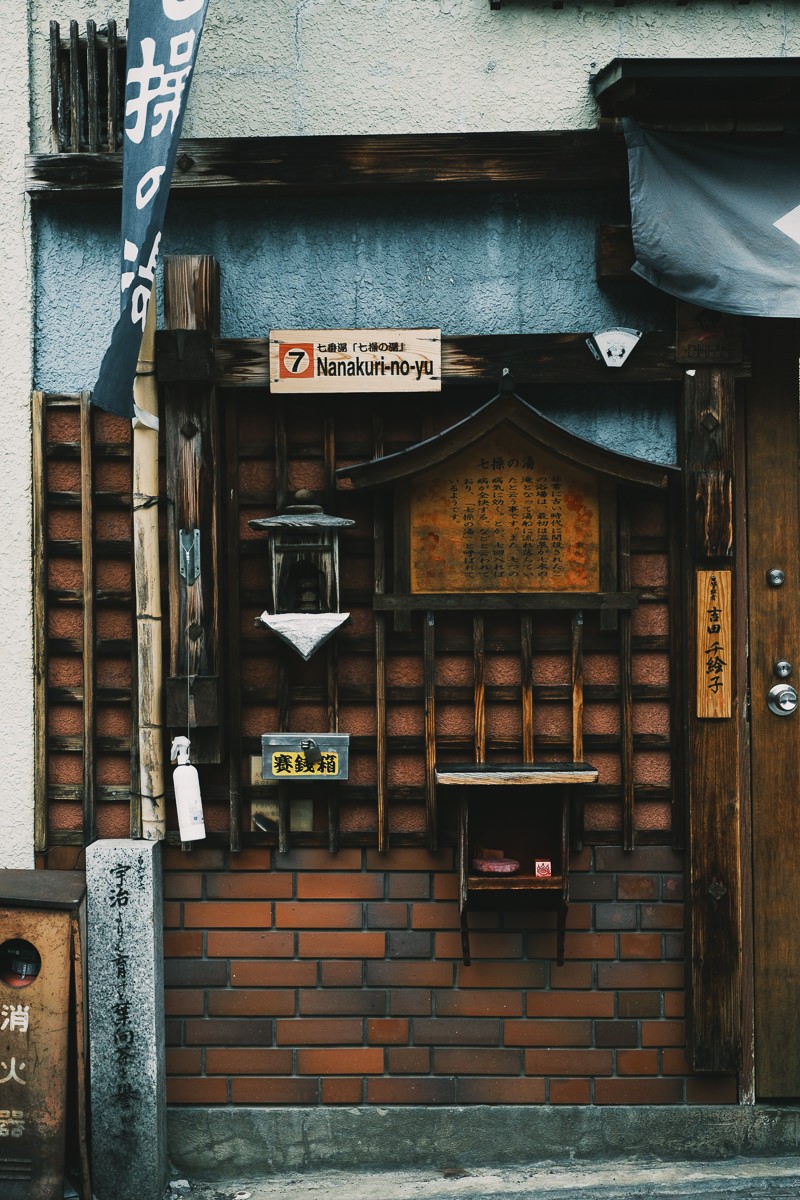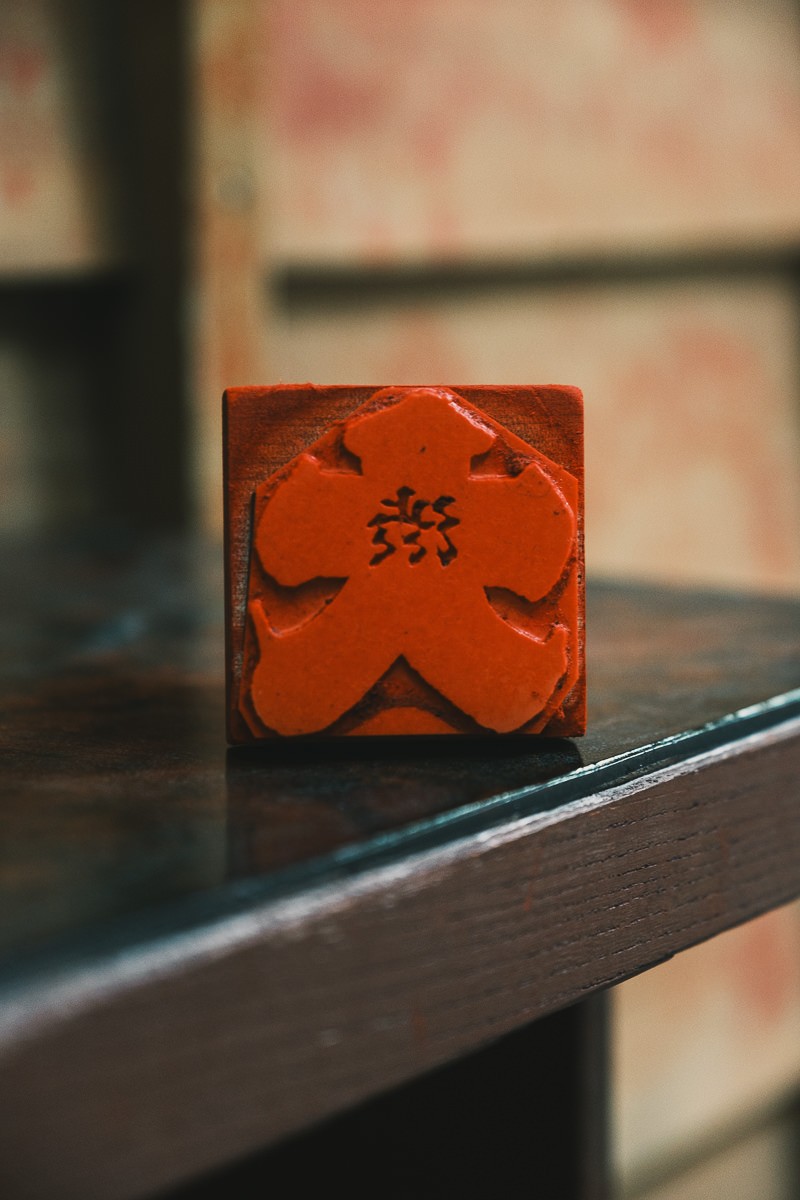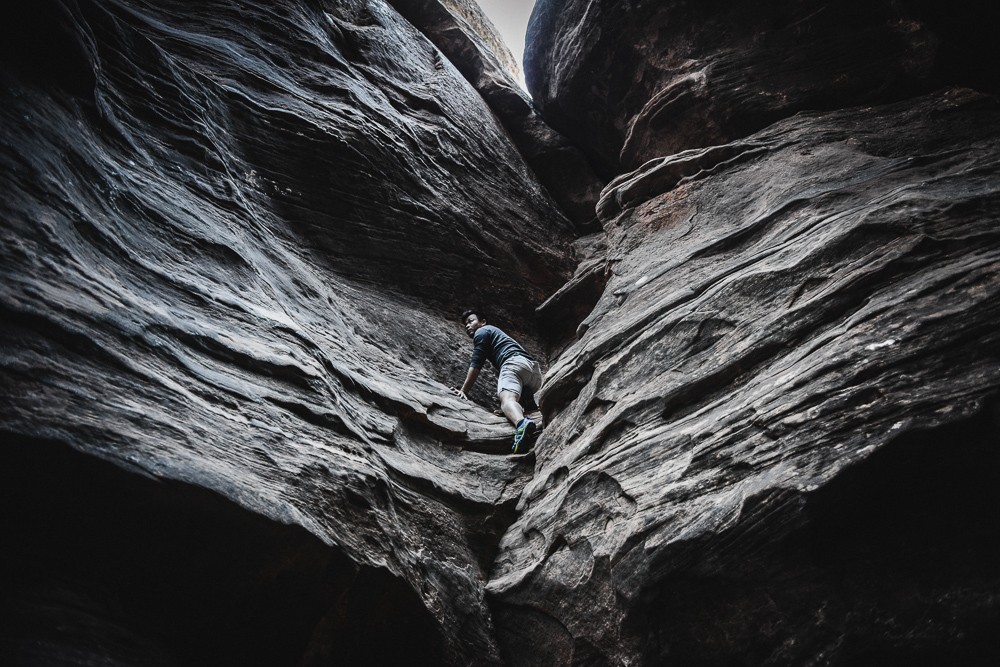The Complete Guide To Shibu Onsen And The Nine Bathhouses
The Complete Guide To Shibu Onsen And The Nine Bathhouses
In March, I spent two days relaxing in a small village called Shiba Onsen. There, I completed a local tradition of visiting all nine public bathhouses and getting a stamp at each on a special towel. It was such a random and quirky experience that only happened because I accidentally discovered the town while trying to check off another item from my bucket list – seeing the Japanese snow monkeys bathing in a hot spring.
You are probably in the same boat, so I’ll share my experience and what I learned to give you an idea of what to expect at Shibu Onsen and how to make the most of your visit alongside a trip to Jigokudani Monkey Park.

The 1300 Year Old History Of A Spa Destination
Let’s start from the beginning. Shibu Onsen’s history as a spa destination goes back over 1,300 years when the area’s hot springs were discovered by a Buddhist priest Gyoki. The stories of the springs’ healing properties spread and began attracting pilgrims seeking relief from various ailments.
Over the years, it became an important stop for travelers, samurais and merchants on their way journeying on the Hokoku Kaido highway towards the Zenko-ji Temple in Nagano. The Edo Period (1603-1868) saw the town grow in popularity as ryokans opened up to accommodate travelers.
During the Meiji Era (1868-1912), artists, writers, and intellectual sought out the town for inspiration and relaxation away from the industrial developments and Western influence happening in Japan. Despite this, the town very much remained the same, retaining its charm.
With the construction of the Nagano Electric Railway in 1927, the town welcomed even more visitors and the reputation of the nine bathhouses therapeutic properties was now well-established. The 20th century saw luxurious ryokans opening up and older ryokans adding renovations to adapt to the modern world.
In 1970, the town gained an unexpected source of international publicity when a photograph of the local Japanese macaques bathing in a hot spring appeared on the cover of LIFE magazine. The world was enthralled by the human-like behavior of these ‘snow monkeys’ and the curiosity brought in a new group of visitors.
Today, the snow monkeys still bathe and the town is a harmony of old and new, allowing visitors to experience the tradition of onsen bathing amidst the beauty of the surrounding valley.
I thoroughly enjoyed my visit to Shibu Onsen along with the myriad of activities and bathing I did over the two days I spent there. I hope the information I’ve collected as well as my personal experience can help you plan your trip. Feel free to jump to any of the sections below and bookmark this page to return to when you visit.
Visiting The Snow Monkeys | Staying In Shibu Onsen | Restaurant Recommendations | Checklist of Things To Do | The Nine Bathhouses | Ryokan Recommendations | Transportation
The Ryokan Experience
I am, admittedly, part of the that crowd that learned about Shibu Onsen through my desire to see the snow monkeys bathing. My morning started in Osaka, where I took two Shinkansen (bullet train) to arrive and Nagano and then a local train to get to Yudanaka.
The photograph of a beautiful outdoor hot spring (rotenburo) and its proximate location near the trailhead for the Jigokudani Monkey Park made the Minshuku Miyama the perfect choice for my two day stopover before moving onto Tokyo.
The owner of the inn, a Japanese man in his 60s, picked me up from the station. He and his wife hardly spoke any English, they kindly communicated with pre-translated information sheets printed around the guesthouse.
My room was a traditional Japanese type of accommodation with a tatami mat floor and a futon mattress instead of a bed. A yukata (light cotton kimono) and haori (outer coat) was provided to be worn around the inn and at the bathhouse. The whole setup was very simple, but it was warm, delightful, and everything I needed.
Soaking In A Rotenburo
In my yukata, I headed straight for the outdoor baths, and as luck would have it, the place was completely empty. One of the basic rules of hot spring etiquette is to bathe in the nude. So I rinsed my body inside and then stepped out into the open air in my birthday suit.
That first blast of cold was like a rush of adrenaline to wake me up from my afternoon lull and I beelined straight to the steaming pool. As I cautiously lowered my body into the hot water, I let out the most satisfying sigh and gave myself over to the soothing embrace of the 41°C (105.8°F) water. I closed my eyes and let my mind drift into an almost meditative stupor.
When it got too hot, I only had to rise up or step out for a moment to let the winter air cool me off. The warming and cooling supposedly helps with your blood circulation so I was happy to repeat the cycle over the next hour. Eventually, a couple of other guests arrived and I decided to give them the privacy that I had just enjoyed.

The Kaiseki Dinner Experience
An hour in the water really worked up an appetite just in time for dinner. A quintessential part of the ryokan experience is to enjoy a kaiseki (multi-course meal) dinner prepared by the chef of the guesthouse. Warm, clean and back in my yukata, I sat down to a mouth-watering spread of dishes.
The kaiseki experience is about having a small portion of many courses, a tasting menu of seasonal and local products, prepared in the style of the chef. This haute-cuisine dining experience is meant to be enjoyed slowly and deliberately, to appreciate the food as an art form as much as nourishment.
Wherever you are staying, I highly recommend arranging for their Kaiseki dinner ahead of time. Sometimes, they are fully booked out.
Visiting The Snow Monkeys At Jigokudani Yaen Koen
In the morning, the owner drove me to the trailhead for the monkey park. It was only a short walk, but I didn’t know how to tell him that, so it was just easier to accept the ride. You can bookmark and read about my experience and my complete guide to the Jigokudani Monkey Park if you’re planning to visit, but I’ll summarize some of it here.
From Shibu Onsen, it takes about 30 minutes to walk to the trailhead for the park. All the ryokans and hotels will offer complementary transfer here and back. From the trailhead, it’s a roughly 35 minute moderate difficulty hike covering around 1.7 km to get to the entrance of the park. It’s a lovely walk through the wooded trail with steady gaining elevation.
The park entrance is ¥800 for adults and ¥400 for children.
At the monkey park, you can observe the monkey’s unique bathing rituals up close in a natural setting. The monkeys are quite adorable with their thick and furry coat, but it’s their incredibly human-like expressions and behaviors that make visiting this place a true bucket list experience.
I came to see the monkeys relaxing and enjoying the warmth of the hot springs, but I also encountered monkeys carefully grooming other monkeys with complete focus, some joking around playfully biting a fellow monkey, and even the maternal instincts of a mother shielding her child from the cold.
This is easily the top attraction in Shibu Onsen and does not feel like a zoo.
PRO TIP: If you’re visiting during the winter months between December to March, I recommend proper winter footage and a pair of micro-spikes for the icy and slippery path to the monkey park.
Staying in Shibu Onsen
When I learned about the nine public bathhouses in Shibu Onsen, I knew I wanted to book a ryokan stay there in order to use it. Eight of the nine bathhouses in Shibu Onsen can only be accessed by locals and guests staying at inns in the town.
Since I was traveling solo, Suminoyu was an excellent option to stay in the town and experience a more upscale ryokan. My stay includes the master key that opens up all nine of the bathhouses.

Like the day before, my accommodation was a traditional tatami room with a shikibuton (futon mattress), but the comparison ends there. The details and decor of my room at this ryokan was noticeably more refined. While the room retained its minimalist aesthetics, the wood trims had a warm and elegant design and the sliding shoji screens looked to be of a higher level of craftsmanship. Along with the low wooden table and floor cushion, the room created a very calming and peaceful atmosphere.
More importantly, I had my own bathhouse complete with a Japanese smart toilet.
A yukata and hoari set was provided, as well as a selection of thick outer robes I could borrow while walking outside from bathhouse to bathhouse. I prepared my bathing basket that was provided, went the full nine yards and ventured out with a pair of geta (wooden sandals). They are incredibly difficult to walk in, but it completed the look.

Below’s a map of the Shibu Onsen town to give you a sense of where the bathhouses, ryokans, and restaurants are located. Most of the spots in town are located on the Main Street at the top of the map. The rest are tucked away down the alley streets and the main road into town.

Eating In Shibu Onsen
Strolling through the town, it feels like you’ve stepped back in time to a place where multiple periods exist all at once. The narrow streets are lined with shops and inns, each with a unique facade but sharing the same wooden architecture aesthetics. Edo and Meiji style lanterns and shrines adorn the buildings, but you’ll also find old coca-cola bottles and even a vintage Asahi vending machine from the 90s. The only reminder that you are in present day Japan is the tangle of electrical wires overhead.
I have to warn you though that it takes a bit of practice to get the hang of walking with the wooden geta on the cobblestone streets. You’re not getting anywhere fast, and maybe that’s the whole point. Before taking on the nine bathhouses, I needed to eat. I recommend you have breakfast and dinner at your ryokan to experience the kaiseki meal. But lunch is a great time to step into some of the cozy restaurants in town to experience the local kitchen.
Kozushi
If you’re craving sushi, this is the only spot in town. It’s run a single chef so the service can be a little slow if there are other diners. I found this spot charming. There was nothing mind-blowing about the sushi, but it was fresh and beautifully prepared. It’s easy to order from one of the pictured sets or a chirashi bowl with a mix of sashimi on top of warm rice. Sets were between ¥1200 to ¥2000.
Ramen Tokumi
This old school ramen bar serves up what you’d expect from a warm no-frills bowl of miso ramen or tsukemen ramen. I stopped in between bathhouses and the service was quick. The gyozas were tempting, but I had to save room for the other spots. They also other dishes besides ramen and the meals were between ¥800 to ¥1200. They even have bowl of ramen if you want to try other dishes.
Soba Yariya
This was my favorite restaurant in town and the owner’s collection of vintage toys and collectibles alone is worth the visit. The udon soup was lip-smacking good and warmed me right up. It’s run by a couple and I loved that you can sit cross-legged and enjoy your meal surrounding by all the kitschy memorabilia.
Kaneshin
I had dinner here in private room because I was craving gyoza after passing on it during lunch. Their tempura was crispy and light as were the tonkatsu cutlets. If you’re not having dinner at your ryokan, this is a great spot for a nice meal and drinks after your bathing adventure.
Enza Cafe
This cafe is located right at the trailhead for the monkey park. They do a delicious warm apple pie. It’s a nice spot to for a quick coffee and snack before or after your visit to Jigokudani Monkey Park.
Checklist Of Top Things To Do In Shibu Onsen
This is just my personal list of things to do to make the most of your visit to Shibu Onsen. You should easily be able to do all of this with an overnight stay.
1. Visit the Jigokudani Monkey Park. The obvious one. Plan your visit in the morning after breakfast. The hike is lovely and you can easily spend an hour or two observing the human-like monkey behavior.
2. Stay at a Ryokan. It would be a shame to visit this area and the monkey park for just a day. Stay in a traditional Japanese inn and enjoy their hot spring baths in the traditional way.
3. Bath at the nine bathhouses and collect the stamps. While your ryokan will have their own baths, it’s fun to get dressed up in the provided yukata and putter around with the wooden geta sandals from bathhouse to bathhouse. It’ll take a few hours, so pace yourself and add in some activities in between.
4. Visit the Tamamura Honten Brewery. Just across the bridge is a small sake brewery and art gallery. You can drink the local sake here and bring a bottle back to your ryokan.
5. Eat an onsen egg. The water from the hot springs can get really hot – enough to cook an egg. And that’s precisely what you’re after. Outside the Kokuya Hotel, you can find a basket of eggs being steamed by hot spring water. Put in a ¥50 coin for one egg and enjoy a bit of protein between your baths.
6. Play table tennis in between baths. A bit random, but there’s room where you can just pop in and play some table tennis. Why not get a rally going between bathhouse #9 and #1.
7. Admire the tchotchke collection at Soba Yariya. This cute noodle shop run by a husband and wife has the coolest vintage tchotchke collection. It’s almost like a little museum. This is a must-visit lunch spot that I’d recommend to any visitor.
8. Enjoy a kaiseki dinner. Finish your day with a lovely spread of Japanese haute cuisine prepared at your ryokan. It may look like a lot of food, but each dish is small and collectively, it’s such a delight for the eyes and the stomach.
Bonus #1: Bathe with the monkeys at Korakukan Onsen. You may already have had your fill of bathing, but if you want to bathe in the original onsen where the macaques first starting bathing in 1962, you can get a day pass. It’s located right across from the Jigokudani monkey park on your own in, so pair this with a visit.
Bonus #2: Go skiing or hiking at the Shiga Kogen Ski Resort. The resort is only about 30 minutes away from Shibu Onsen and is a ski destination during the winter while summer offers some lovely mountain trails for hiking.
The Nine Bathhouses Of Shibu Onsen
Shibu Onsen is famous for its nine public bathhouses, known as “soto-yu” or outside baths. The thing is, your ryokan will already have their own hot springs and baths. And those will be more luxurious, modern and comfortable.

But part of the Shibu Onsen experience is the walking the quaint streets in your yukata and visiting each of the nine bathhouses. For visitors, it’s the social experience of “bath-hopping” as much as it is the relaxation and healing. Each bath has its own medicinal properties, and you’re meant to collect all nine stamps from the individual bathhouses and one final stamp at the Takayakushi Temple. Doing so, as the local legends goes, will grant you good health and fortune and ward off bad ailments and misfortune.
A special tenugui towel can be bought any your ryokan or any shop in town for ¥300. There are open spaces under each of the names of the bathhouses on the towel where you will stamp. Even if the luck thing isn’t true, you will certainly finish the challenge feeling good and have a unique keepsake souvenir to bring home.
Basic Onsen Etiquettes For Bathing In Japan
If it’s your first time bathing in a hot spring in Japan, you should learn and observe these basic rules and etiquettes.
Clean yourself or rinse before entering
There’s always an area where you can shower or wash up before entering a communal bath. If not, you’re meant to use a small bucket to rinse yourself with the hot spring water before entering.
No clothes or bathing suit
It’s normal and expected to bath completely nude, even in a communal pool. Men and women usually have their own separate bathing area. There are some onsen that have traditional mixed-gender bathing. Do not wear a bathing suit or a towel when bathing.
No visible tattoos
Most onsen and bathhouses prohibit tattoos. If yours is small enough and can be covered with waterproof adhesive tape, you may be allowed in. There are often private onsen options for those with tattoos.
Do not submerge your towel
Most bathers bring in a small hand towel for wiping off sweat and drying off before returning to the changing area. You’re are not submerge your towel in the water. Most people will keep it on their shoulders or on top of their heads.
Do not submerge your head underwater
For hygienic reasons, do not put your head underwater. Nobody wants to find hair floating around in the baths.
Be mindful of your voice
Communal bathing space are quiet spaces. If you want to have a conversation with a friend, keep it to a minimum and lower your voices.
Dry off completely
Don’t walk into the changing area dripping wet. Dry off first. That’s what the small towel is for.
The Healing Properties For Each Bathhouse
While the bathhouses share a similar facade on the outside, each one is different as well as the water that flows in. The baths are kake-nagashi style, which means a constant flow of hot spring water enter pushing out the water in the bath. The spring water flows in very hot from the source, so there’s a cold water faucet in each bath to allow you to adjust the temperature to your liking.
From experience, I’d say to manage your expectations. These are small public baths meant to be used by the locals. They are basic, can accommodate at most 2-3 people (except #9) and are far from the luxurious ones you might find at your ryokan.
Some of the baths were clear, others were opaque and milky. Some with more modern tilings and others completely constructed from wood. A couple of the bathhouses looked dark and dingy, but they were all clean because fresh water is constantly flowing through.
#1 Hatsu-yu: Stomach and Intestinal Ailments
#2 Sasa-no-yu: Skin conditions
#3 Wata-no-yu: Cuts and Acne
#4 Take-no-yu: Gout
#5 Matsu-no-yu: Nerve Pain and Spinal Issues
#6 Mearai-no-yu: Eye Diseases
#7 Nanakuri-no-yu: Injuries and Trauma
#8 Shinmeidaki-no-yu: Women’s Health Issues
#9 O-yu: Joint and Nerve Ailments
This one is the largest of the baths and also open to the day visitors from 10 am to 4 pm for ¥500. The bathhouse is located down a small set of stairs across from the steep stairs leading up to the Takayakushi shrine. This was probably the nicest of the bath and the water temperature was perfect without any adjustments.
TIP: Day visitors who want to use the O-yu bathhouse (#9) can purchase a ticket for ¥500 at the Shibu Onsen Visitor Center or at the Shibu Onsen Parking Lot by the Shibuya Bridge.
Where To Stay And Ryokan Recommendations For Shibu Onsen
Kokuya
Kokuya Ryokan was established in 1625. This institution is run by the 16th generation of the family and the current building was constructed in 1957 with the traditional wooden architecture aesthetics.
They have nine baths throughout the building. Amongst them, two are for private use with reservation. They rotate the bath schedule between men and women so all guests can enjoy every facility. All the rooms also come with their own private open air bath.
Between the kaiseki dining and the baths, this is the full ryokan experience at its best for a very reasonable rate, especially if you find a partner offer rate. It’s a hard toss-up between Kokuya and the next place on the list as the ryokan I plan to stay at with my girlfriend next time.
Kanaguya
The old Kanaguya Ryokan wooden building dates back over 250 years and is the most iconic landmark in Shibu Onsen. Rumor is that it served as an inspiration for Hayao Miyazaki’s animated masterpiece, “Spirited Away.” It certain resembles another famous building with the same Miyazaki connection.
The narrows corridors and staircases lit by hanging lanterns will certain give you that Ghibli castle and old town vibe – especially at night. There are 5 private baths that you can use without reservation as long as it’s available. Each are different and themed. There’s also two public indoor baths and two outdoor rotenburo for bathing under the stars. Rates for the night include their kaiseki dinner, so it’s great bargain to stay in such an iconic ryokan.
TIP: Use the hotel’s website to search for date and room availability. Then book here for a better rate than the hotel’s official prices.
Suminoyu
As a solo traveler, I stayed the Suminoyu, which was both affordable and comfortable, while still allowing me to visit the nine baths. This modern hotel offer traditional tatami rooms with floor futons and also western style beds. There’s a modern indoor bath and a tranquil outdoor bath. I found the facilities to be excellent and the room excellent for the price. This is a larger establishment than Minshuku Miyama, where I stayed the night before, so it did feel a little less personal. However, the staff were very professional and friendly.
Other Ryokan To Consider
Wafu-no-Yado MASUYA. This ryokan checks every box as far as offering a full experience. The decor is traditional, the menus are well reviewed, and the baths are just beautiful. While not as iconic and old as Kokuya or Kanaguya, this is a great hotel. They have public baths and the option to rent out their private baths.
Yudanaka Onsen Yamazakiya. This simple ryokan is great for solo travelers and is one of the cheaper accommodations in Shibu Onsen.
Onyado Hishiya Torazo. Tucked away in a small alley by bathhouse #9, this little oasis is well-liked by guests for its baths and traditional cuisine.
Daymaruya. This is one of the cheapest option for staying in Shibu Onsen for those on a budget. It’s run by a husband and wife couple, who are very accommodating with offering transportation to the train station and monkey park. There’s an onsen onsite and even at this rate, you’ll get access to the public baths in town.
How To Get To Shibu Onsen
Shibu Onsen is located in the town of Yamanouchi, about 50 minutes away from Nagano. The closest train station is Yudanaka Station, which is 5 minute car ride or a 20 minute walk into town.
From Tokyo
The fastest way from Tokyo is to travel by the JR Hokuriku Shinkansen (bullet train) from Tokyo Station to Nagano Station. The journey takes roughly 1 hour and 35 minutes and costs ¥8340. This train is included with your JR Rail Pass. At Nagano Station, follow the directions ‘From Nagano’ below.
By car, it takes about 4 hours to travel from Tokyo to Shibu Onsen via Nagano. The distance is between 275 – 325 km depending on the route you take.
From Osaka
The fastest way from Osaka is to travel by the JR Tokaido-Sanyo Shinkansen from Shin Osaka to Nagoya Station (50 minutes and ¥6680) and transfer to the JR Shinano Limited Express (3 hours and ¥7460) to Nagano Station. Both JR trains are included with your JR Rail Pass.
At Nagano Station, follow the directions ‘From Nagano’ below.
From Nagano
1. From the Nagano Station, take the Dentetsu Nagano Line train to Yudanaka Station. The train ride is about 50 minutes with the last stop at Yudanaka Station and costs ¥1290. This train is not covered with your JR Rail Pass.
TIP: Every ryokans and hotel in the town will provide transportation from Yudanaka Station.
My Favorite Onsen Experiences In Japan
Over the years, I’ve visited many onsen towns, and some places have truly stood out. If you are interested in the Japanese onsen experience, you can also check out a few of these below:
Near Aomori, I put my modesty aside and visited a mixed-gender cypress bath in the mountains.
In Hokkaido, I bathed overlooking the steaming geysers and alien landscape of Noboribetsu’s Hell Valley. For Tokyo, I stayed at the new state of the art Toyosu Manyo Club Onsen overnight to see the famous tuna auction.
After visiting the Fushimi Inari Shrine in Kyoto, I hopped on a train to the Uji Natural Hot Springs for a soak with the locals. And in Osaka, I visited the famous multi-story Spa World.
Whatever your fancy, there’s an onsen experience for it in Japan, so have fun exploring.
If you’re looking for more travel inspiration, scroll through some of the 450+ experiences on my bucket list. Maybe you’ll find your next adventure on there.
How You Can Help
When you make a purchase using these links, you’ll help support this site at no cost to you.
| Booking.com | Agoda.com |
| Amazon.com | Klook.com |
| Viator.com | GetYourGuide.com |
Updated on July 3, 2024












